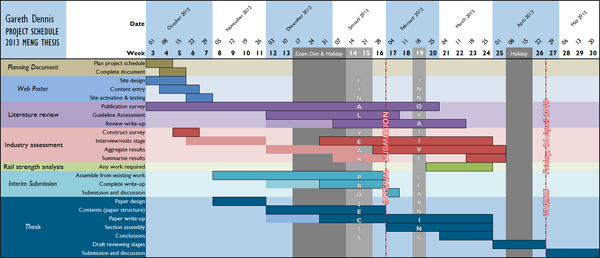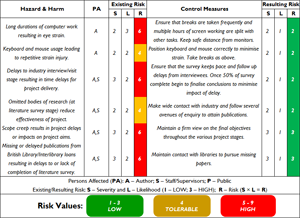
This website was created to introduce the various aspects considered in the MEng Thesis of Gareth Dennis and will continue to be updated as part of the project.
Photo credits: © 2013 Gareth Dennisunless otherwise stated

Initially undertaken to form the author’s final year MEng thesis within the University of Edinburgh’s School of Engineering, this project has subsequently led to additional published papers and a PhD research project proposal to expand upon its conclusions.
This project aims to provide both an assessment of the risk presented to heritage railway operations by the failure of worn rails and an estimation of likely limits for rail wear, with the intention of establishing the need for unified guidelines that will benefit the industry by minimising risk whilst accounting for resource limitations.
This will be achieved by:
- assessing the nature of heritage railway infrastructure;
- summarising current practices on heritage railways regarding the assessment of worn rails and their consequences;
- determining the likely structural resistance of rails in varying states of wear;
- establishing, through the discussion of the previous results, the usefulness of generating new guidelines specific to the heritage industry that minimise risk whilst accounting for resource limitations.
Though the degradation of several other features such as earthworks, structures, substrate and supporting track components will affect the safe operation of heritage lines, only the impact of steel running rails will be considered in order to maintain a realistic project scope.
The project was completed over a thirty week working timescale, not including additional holiday and exam periods. The project schedule is included below (click to enlarge):
Key Dates:
Friday 19 October 2012: Project Planning Document submissionWednesday 31 October 2012: Web Poster (website) presentationsFriday 1 February 2013: Interim SubmissionFriday 26 April 2013: MEng Thesis submission
The first work to be carried out is a literature survey, which should attempt to be as exhaustive of research into the structural impacts of rail wear as possible. Related work regarding the management of wear with restricted resources and the risks presented by rail failures on the mainline network should be included.
Current industry practice and a summary of the nature of heritage railway infrastructure will then be determined by a widespread survey of standard gauge heritage railways across Britain. This will be undertaken in the form of interviews with managers or engineers on each line, recording relevant data in a prearranged format. This data will then be aggregated and quantified to give a practical overview of the heritage rail sector.
Provided that a suitable method is identified by the literature review it would be expedient to calculate acceptable wear limits for multiple rail profiles in use on heritage railways and use these values to further quantify the risks presented by inadequate management of worn rails.
The salient results of the literature review, industry survey and any calculations should then be discussed and conclusions drawn as to the efficacy of current operating methodologies and the requirement for new guidelines to be established.
Risks to this project achieving its objectives exist both in the literature review and industry survey. Owing to the nature of UK rail research, reports published by the British Rail Research Division and its successors remain the intellectual property of DeltaRail Group Limited and are therefore largely inaccessible. It is possible that this is the case for other sources of relevant literature. This may be overcome by ensuring that a wide enough survey is made, by discussing likely sources of publications with permanent way managers, rail regulators and past and current researchers and by sourcing summary and review papers that discuss the contents of these publications.
The success of the industry survey will depend on interviewing a representative number of permanent way supervisors. The difficulty of attaining contact details, alongside both the nature of heritage staffing as being primarily formed from volunteers and of infrastructure work being site-based will decrease the chance of successfully contacting a high number of lines. This should largely be mitigated, however, by ensuring a long duration for this process and ensuring that the other aspects of the project progress in parallel to it rather than relying on the industry survey as a critical task.
Provided that these risks are suitably managed they should not impact on the outcome of the project. The risk assessment covering the scope of the project at this stage is included above (click to enlarge).



